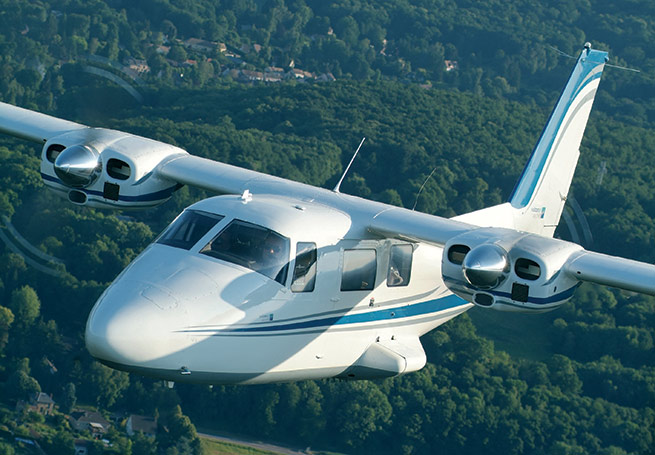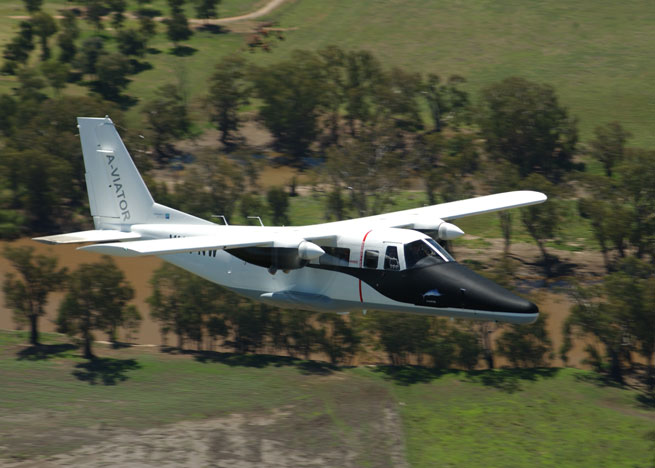Less than year after it dropped by Sun 'n Fun in Lakeland, Fla., on a flight from Italy to Brazil, the updated version of Vulcanair’s high-winged, twin-engine model VR P68R has become available to buyers in the U.S., as has a turboprop variant, announced the manufacturer.
In February the FAA validated several design changes for the Lycoming-powered VR P68R, and for the latest version of the A-VIATOR AP68TP-600, a nonpressurized turboprop powered by two Rolls-Royce 250 engines of 328 shaft horsepower each.
The VR P68R—suited to a role as a utility player thanks to its ample visibility both ahead and below—is powered by two 200-horsepower Lycoming IO-360 engines that can utilize the aircraft’s 177-gallon fuel load to provide 10 hours of endurance, the company said.
The most significant change is the aircraft’s addition of retractable landing gear, which boosts cruise speeds about 15 knots over previous fixed-gear iterations. The twin now includes a larger baggage compartment to serve the occupants of the four-seat passenger cabin, which can be arranged club-style if desired.
In April 2013 AOPA reported that the aircraft viewed at Sun ’n Fun carried a Garmin G950 panel and numerous interior and other enhancements, and came with a list price of $985,000. Previous models included Sagem avionics.

Vulcanair hopes to interest private operators and flight schools in the aircraft, emphasizing its roominess and sturdiness as a training platform.
2013’s delivery flight to Brazil, during which the aircraft flew over Italy, France, England, Iceland, Greenland, the U.S., and the Caribbean, and encountered a wide array of weather conditions, showcased the aircraft to a broad audience, Vulcanair said.
For the turbine-powered AP68TP-600, Vulcanair claims better speed (200 knots) than most single-engine utility turboprops, but with a similar price, and—at a fuel burn of 249 pounds of fuel per hour—lower total fuel consumption.
Offered in several versions from 11-seat transport to surveillance and maritime patroller, and with engines optimized for flight below 20,000 feet, the twin turboprop "maintains the easy to fly qualities of the P68 Series aircraft."
"At Vulcanair we are pleased to be finally able to offer these excellent aircraft to our U.S. customers and friends," said Vulcanair co-founder and CEO Remo De Feo. "We believe that the two new variants will bring some fresh air to their two segments of the market in which there have not been any new certified aircraft offerings available in a while."




